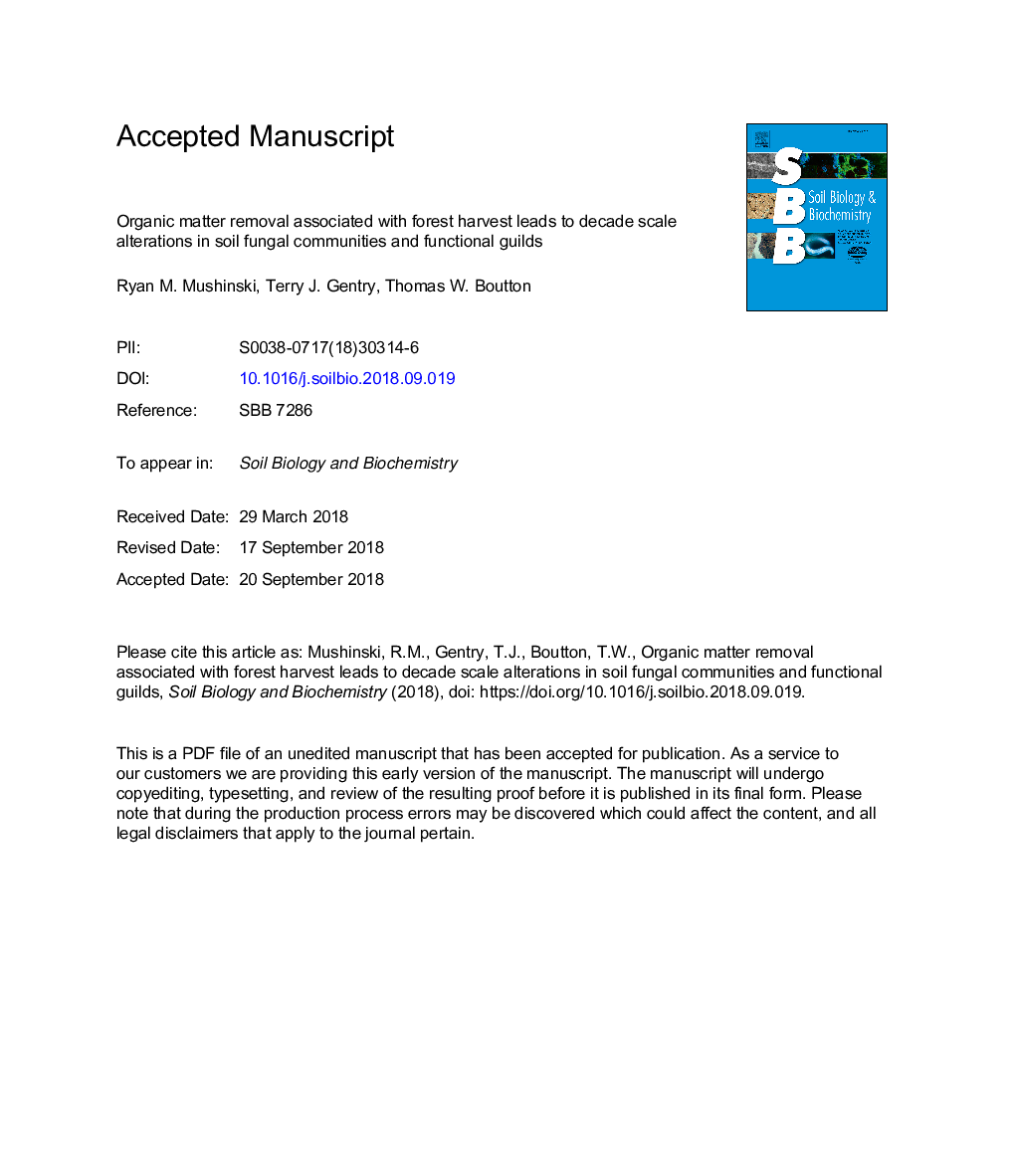| Article ID | Journal | Published Year | Pages | File Type |
|---|---|---|---|---|
| 11025996 | Soil Biology and Biochemistry | 2018 | 39 Pages |
Abstract
Intensive organic matter removal (OMR) associated with timber harvest has the potential to impart long-term alterations to soil biota and associated properties and processes; however, there is a lack of data to say if this trend persists at depth. This study investigated how OMR influences long-term stability of soil fungi to a depth of 1â¯m using a replicated experimental pine forest in the Gulf Coastal Plain, USA. Treatments included unharvested control stands as well as low- and high-OMR stands. Intensive OMR led to significant differences in community structure and the abundance of functional guilds in surficial soil. Saprophytic taxa increased while ectomycorrhizal (ECM) taxa decreased with intensive-OMR, which correlated strongly with increased surface temperature and reduced soil nitrogen. Ericoid mycorrhizae (ERM) also increased in intensive-OMR stands, which may indicate that following disturbance, ERM could outcompete ECM for colonization of subsequent seedlings. Overall, no differences were observed below 30â¯cm, except for alpha diversity, which was a function of high inter-replicate variability. Our results illustrate a distinct long-term structural and functional response of soil fungi to intensive-OMR in the upper portions of the soil profile, which could lead to altered stand productivity and ecosystem services.
Related Topics
Life Sciences
Agricultural and Biological Sciences
Soil Science
Authors
Ryan M. Mushinski, Terry J. Gentry, Thomas W. Boutton,
